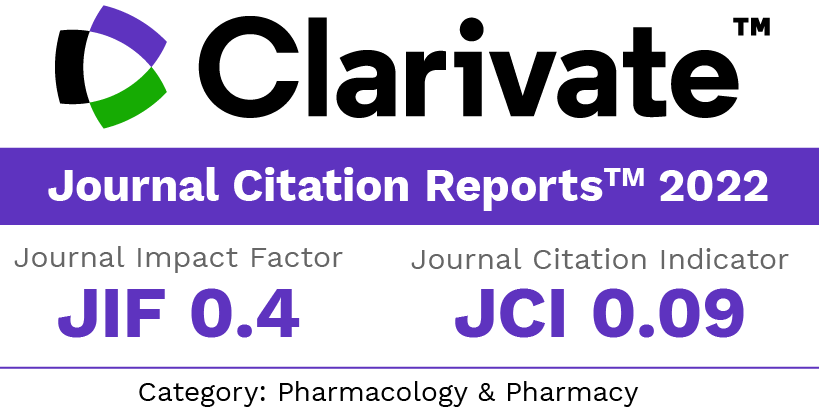Combinación de interferones en pacientes con tumores cerebrales de alto grado de malignidad sin opciones terapéuticas
DOI:
https://doi.org/10.30827/ars.v64i4.27824Palabras clave:
tumor cerebral; interferón; investigación clínicaResumen
Introducción: La escasa supervivencia de pacientes con tumores cerebrales de alto grado de malignidad, pese a la existencia de algunas opciones de tratamiento, conduce a la búsqueda de nuevas modalidades terapéuticas. La combinación cubana de interferones alfa y gamma es novedosa y existen evidencias de que aumenta la supervivencia de pacientes con tumores sólidos.
Método: Se realizó una investigación clínica para determinar la eficiencia de la combinación en pacientes con tumores cerebrales de alto grado sin opciones terapéuticas. Se incluyeron 40 pacientes tratados en el Hospital “Arnaldo Milián Castro” en el período 2009-2020, se evaluó seguridad y eficacia.
Resultados: No se produjeron efectos adversos graves, fueron leves o moderados, y los pacientes se recuperaron. Al año habían fallecido el 8,7 % de los casos del grupo experimental, frente al 70,6 % en el grupo control. La supervivencia global en estadio III fue similar en ambos escenarios y en estadio IV fue superior para el grupo experimental. La posibilidad de sobrevivir para los pacientes que se trataron con la combinación de interferones fue 0,887 veces superior a los casos control. Se produjeron diferencias significativas en la capacidad funcional entre ambos grupos de pacientes.
Conclusiones: Se evidenció que la combinación cubana de interferones es segura y eficaz para el tratamiento de tumores cerebrales de alto grado de malignidad sin opciones terapéuticas, lo que la convierte en una opción eficiente en este escenario clínico.
Descargas
Citas
Sung H, Ferlay J, Siegel R L, Laversanne M, Soerjomataram I, Jema A, et al. Global Cancer Statistics 2020: GLOBOCAN Estimates of Incidence and Mortality Worldwide for 36 Cancers in 185 Countries. CA Cancer J Clin. 2021; 71(3): 209-249. doi:10.3322/caac.21660
Díaz J, Reyes M, Rodríguez L, Sierra E. Medios diagnósticos y tratamientos actuales del glioblastoma multiforme. Progaleno. 2020; 3(2): 87-102. doi:revprogaleno.sld.cu/index.php/progaleno/article/view/165
Lukas R, Wainwright D, Ladomersky E, Sachdev S, Sonabend A, Stupp R. Diagnosed Glioblastoma: A Review on Clinical Management. Oncology (Williston Park). 2019; 33(3):91-100. doi:europepmc.org/articles/PMC7278092
You S, Hara A, Kanayama T, Noguchi K, Niwa A, Miyai M, et al. Treatment Strategies Based on Histological Targets against Invasive and Resistant Glioblastoma. J oncol. 2019; 3(2): 1-10. doi:10.1155/2019/2964783
Schenk R. Neuroonkologische therapiekonzepte zur behandlung von astrozytomen hoheren malignitatsgrades und rezidivlokalisation. [Tesis Doctoral]. Alemania: Universidad Ratisbona; 2019. Disponible en: https://epub.uniregensburg.de/40710/1/Neuroonkologische%20Therapiekonzepte%20Astrozytom%20und%20Rezidivlokalisation%28ohne%20CV%29.pdf
Ocampo MI, Gómez JC, Feo OH. Epidemiología y caracterización general de los tumores cerebrales primarios en el adulto. Universitas medica; 60(1): 47-60. doi:10.11144/javeriana.umed60-1.cere.
Comas AS. Glioblastoma tras radioterapia: estudio de la supervivencia y del patrón de recaída en relación con la localización de la lesión respecto a la zona subventricular y la dosis de radiación recibida en dicha área. [Tesis Doctoral] España: Universidad Autónoma de Barcelona; 2018. Disponible en: https://dialnet.unirioja.es/servlet/tesis?codigo=271553
Bruna J, Alemany M. Perspectiva histórica de los estudios con mayor impacto en el tratamiento de los gliomas. Rev neurol. 2020; 70(06): 220-230. doi:10.33588/rn.7006.2019144
Wang J, Hu G, Quan X. Analysis of the Factors Affecting the Prognosis of Glioma Patients. Open Med 2019; 14: 331-335. doi:10.1515/med-2019-0031
Requena C, Alsina M, Morgado-Carrasco D, Cruz J, Sanmartín O, Serra-Guillén C, et al. Sarcoma de Kaposi y angiosarcoma cutáneo: directrices para el diagnóstico y tratamiento. Actas Dermosifiliogr 2018; 109(10): 878-887. doi:10.1016/j.ad.2018.06.013
Peña JA, Aguilar J, Alcivar LM, Álvarez JL, Anaya I, Añorve E, et al. Consenso Mexicano de Mieloma Múltiple. Gac Med Mex. 2020; 156(2): 1-49. doi:10.24875/gmm.m20000392.
Hernández J, Roque A. Interferones y SARS-CoV-2. Boletín Científico del CIMEQ. Actualización médica del SARS-CoV-2. 2020; 1(8): 6-7 Disponible en: http://files.sld.cu/cimeq/files/2020/05/Bol-CCimeq-2020-1-8-pag6-7.pdf
Sallard E, Lescure FX, Yazdanpanah Y, Mentre F, Peiffer-Smadja N. Type 1 interferons as a potential treatment against COVID-19. Antiviral res. 2020; 178(104791): 1-4. doi:10.1016/j.antiviral.2020.104791
Hao Q, Tang H. Interferon-γ and Smacmimetics synergize to induce apoptosis of lung cancer cells in a TNFα-independent manner. Cancer cell int. 2018; 18(84): 1-12. doi:10.1186/s12935-018-0579-y
rd Annual Meeting & Pre-Conference Programs of the Society for Immunotherapy of Cancer (SITC 2018). JITC 2018; 6(115): doi:10.1186/s40425-018-0423-x
Deng S, Zhang G, Kuai J, Fan P, Wang X, Zhou P, et al. Lentinan inhibits tumor angiogenesis via interferon γ and in a T cell independent manner. J Exp Clin Cancer Res. 2018; 37(260): 1-12. doi:10.1186/s13046-018-0932-y
Green D, Nunes A, David-Ocampo V, Ekwede I, Houston N, Highfill S, et al. A Phase 1 trial of autologous monocytes stimulated ex vivo with Sylatron® (Peginterferon alfa-2b) and Actimmune® (Interferon gamma-1b) for intra-peritoneal administration in recurrent ovarian cancer. J Transl Med. 2018; 16(1): 196. doi:10.1186/s12967-018-1569-5
Provance OK, Lewis-Wambi J. Deciphering the role of interferon alpha signaling and microenvironment crosstalk in inflammatory breast cancer. Breast Cancer Res 2019; 21(59): 1-10. doi:10.1186/s13058-019-1140-1
Lu C, Klement J, Ibrahim M, Xiao W, Redd P, Nayak-Kapoo A, et al. Type I interferon suppresses tumor growth through activating the STAT3-granzyme B pathway in tumor-infiltrating cytotoxic T lymphocytes. J Immunother Cancer 2019; 7(157): 1-11. doi:10.1186/s40425-019-0635-8
Green DS, Nunes AT, David-Ocampo V, Ekwede IB, Houston ND, Highfill SL, et al. A Phase 1 trial of autologous monocytes stimulated ex vivo with Sylatron® (Peginterferon alfa-2b) and Actimmune® (Interferon gamma-1b) for intra-peritoneal administration in recurrent ovarian cancer. J Transl Med. 2018; 16(196): 1-9. doi:10.1186/s12967-018-1569-5
Resumen de las Características del Producto HeberFERON® (Interferón alfa 2b hu-rec + Interferón gamma hu-rec) [Internet].Registro Sanitario de Medicamentos, Centro para el Control Estatal de Medicamentos, Equipos y Dispositivos Médicos CECMED. 2017; Disponible en: https://www.cecmed.cu/registro/rcp/biologicos/heberferonr-interferon-alfa-2b-hu-rec-interferon-gamma-hu-rec
Wahner HCW, Träger M, Bender K, Schweizer L, Onken J, Senger C, et al. Predicting survival in anaplastic astrocytoma patients in a single-center cohort of 108 patients. Radiat Oncol. 2020; 15(282): 1-9. doi:10.1186/s13014-020-01728-8
Christians A, Adel-Horowski A, Banan R, Lehmann U, Bartels S, Behling F, et al. The prognostic role of IDH mutations in homogeneously treated patients with anaplastic astrocytomas and glioblastomas. Acta Neuropathol Commun. 2019; 7(156): 1-11 doi:10.1186/s40478-019-0817-0
Wu J, Yuan Y, Long Priel DA, Fink D, Peer CJ, Sissung TM, et al. Phase I Study of Zotiraciclib in Combination with Temozolomide for Patients with Recurrent High-grade Astrocytomas. Clin Cancer Res. 2021; 27(12) 3298-3306. doi:10.1158/1078-0432.CCR-20-4730
Cloughesy TF, Petrecca K, Walbert T, Butowski N, Salacz M, Perry J, et al. Effect of Vocimagene Amiretrorepvec in Combination With Flucytosinevs Standard of Care on Survival Following Tumor Resection in Patients With Recurrent High-Grade Glioma: A Randomized Clinical Trial. JAMA Oncol 2020 6(12): 1939-1946. doi:10.1001/jamaoncol.2020.3161
Shieh L, Guo H, Ho C, Lin L, Chang C, Ho S Survival of glioblastoma treated with a moderately escalated radiation dose-Results of a retrospective analysis. PloS one 2020 15(5): 1-14 doi:10.1371/journal.pone.0233188
Eun J, Sung H, Young S, Chai S, Hoon J, Heo H. Identification of Early Response to Anti-Angiogenic Therapy in Recurrent Glioblastoma: Amide Proton Transfer–weighted and Perfusion-weighted MRI compared with Diffusion-weighted MRI. Radiology 2020 295(2): 397-406 doi:10.1148/radiol.2020191376
Kumar G, DSouza H, Menon N, Srinivas S, Vallathol DH, Boppana M, et al. Safety and efficacy of bevacizumab biosimilar in recurrent/ progressive glioblastoma. Ecancermedicalscience, 2021 15(1166): 1-9 doi:10.3332/ecancer.2021.1166
Biswas A. Bevacizumab in progressive or recurrent glioblastoma: A quest for the optimal dosage. Cancer Research, Statistics, and Treatment, 2021; 4: 356-359 doi: 10.4103/crst.crst_128_21
Dietterle J, Wende T, Wilhelmy F, Eisenlöffel C, Jähne K, Taubenheim S, et al. The prognostic value of peri-operative neurological performance in glioblastoma patients. Acta Neurochir, 2020; 162: 417-425 doi:10.1007/s00701-019-04136-4
Straube C, Kessel KA, Antoni S, Gempt J, Meyer B, Schlegel J, et al. A balanced score to predict survival of elderly patients newly diagnosed with glioblastoma. Radiat Oncol 2020; 15(97): 1-16 doi:10.1186/s13014-020-01549-9
Pierscianek D, Ahmadipour Y, Kaier K, Darkwah Oppong M, Michel A, et al. The SHORT Score for Preoperative Assessment of the Risk for Short-Term Survival in Glioblastoma. World neurosurg 2020; 138: e370-e380 doi:10.1016/j.wneu.2020.02.131
Seystahl K, Hentschel B, Loew S, Gramatzki D, Felsberg J, Herrlinger U, et al. Bevacizumab versus alkylating chemotherapy in recurrent glioblastoma. J Cancer Res Clin Oncol. 2020 146: 659-670 doi:10.1007/s00432-019-03086-9
Omuro A, Vlahovic G, Lim M, Sahebjam S, Baehring J, Cloughesy T, et al. Nivolumab with or without ipilimumab in patients with recurrent glioblastoma: results from exploratory phase I cohorts of Check Mate 143. Neuro Oncol 2018 20(5): 674-686 doi:10.1093/neuonc/nox208
Reardon DA, Brandes AA, Omuro A, Mulholland P, Lim M, Wick A, et al. Effect of Nivolumab vs Bevacizumab in Patients With Recurrent Glioblastoma: The Check Mate 143 Phase 3 Randomized Clinical Trial. JAMA oncol, 2020 6(7): 1003-1010 doi:10.1001/jamaoncol.2020.1024
Nayak L, Molinaro AM, Peters K, Clarke JL, Jordan JT, Groot J, et al. Randomized Phase II and Biomarker Study of Pembrolizumab plus Bevacizumab versus Pembrolizumab Alone for Patients with Recurrent Glioblastoma. Clin Cancer Res. 2021 27(4): 1048-1057 doi:10.1158/1078-0432.CCR-20-2500
Groot J, Penas-Prado M, Alfaro-Munoz K, Hunter K, Pei BL, O’Brien B, et al. Window-of-opportunity clinical trial of pembrolizumab in patients with recurrent glioblastoma reveals predominance of immune-suppressive macrophages. Neuro Oncol 2020 22(4): 539-549 doi:10.1093/neuonc/noz185
Detti B., Scoccianti S., Teriaca M.A., Maragna V., Lorenzetti V., Lucidi S., et.al. Bevacizumab in recurrent high-grade glioma: a single institution retrospective analysis on 92 patients. Radiol Med. 2021; 126: 1249-1254 doi:10.1007/s11547-021-01381-5
Reardon DA, Kim TM, Frenel JS, Simonelli M, Lopez J, Subramaniam DS, et al. Treatment with pembrolizumab in programmed death ligand 1-positive recurrent glioblastoma: Results from the multicohort phase 1 KEYNOTE-028 trial. Cancer 2021 127(10): 1620-1629 doi:10.1002/cncr.33378
Li L, Jiangchao H, Haipeng X., Xiangyang Z. Efficacy and safety of dendritic cell vaccines for patients with glioblastoma: A meta-analysis of randomized controlled trials. Int Immunopharmacol. 2020; 83: 106336 doi:10.1016/j.intimp.2020.106336
Duncan Y, Garcia Y, Collazo S, Rodríguez M, Zalazar M, Rodríguez J, et al. Five years follow-up of patients with non-melanoma skin cancer treated with HeberFERON. medRxiv. 2022; doi:10.1101/2022.02.07.22270604
Esquivel I, Pérez J, Duncan Y, Vázquez D, Bequet M, Báez L, et. al. Effect and safety of combination of interferon alpha-2b and gamma or interferon alpha-2b for negativization of SARS-CoV-2 viral RNA. Preliminary results of a randomized controlled clinical trial. medRxiv 2020; 07: doi:10.1101/2020.07.29.20164251
Viada CE, Lima M, Soriano JL, Fors MM, Santiesteban Y, Santiesteban Y, et al. Meta-análisis de ensayos clínicos controlados de Nimotuzumab combinado con quimiorradioterapia en cáncer esofágico avanzado. Rev Cub Oncol. 2021; 19(3): 1-23 Disponible en: http://www.revoncologia.sld.cu/index.php/onc/article/view/148
Alvarez M, Saurez G, Viada C, Luaces P, Frías A, Santiesteban Y, et. al. Nimotuzumab en el tratamiento de pacientes con glioma ma-ligno. Comparación entre estudios pre-registro y pos-aprobación. Bionatura 2016; 1(4) 171-176 doi:10.21931/RB/2016.01.04.3
Saurez MG, Salva CSN, Piedra SP, Iglesias CB, Toledo JC, Solomón MT, et al. Security and effectiveness of nimotuzumab in patients with malign glial tumors. Rev Cubana Neurol Neurocir. 2015; 5(2): 123-132 Disponible en: http://www.revneuro.sld.cu/index.php/neu/article/view/240
Descargas
Publicado
Cómo citar
Número
Sección
Licencia
Derechos de autor 2023 Javier Cruz Rodríguez, MSc, DrC

Esta obra está bajo una licencia internacional Creative Commons Atribución-NoComercial-CompartirIgual 4.0.
Los artículos que se publican en esta revista están sujetos a los siguientes términos en relación a los derechos patrimoniales o de explotación:
- Los autores/as conservarán sus derechos de autor y garantizarán a la revista el derecho de primera publicación de su obra, la cual se distribuirá con una licencia Creative Commons BY-NC-SA 4.0 que permite a terceros reutilizar la obra siempre que se indique su autor, se cite la fuente original y no se haga un uso comercial de la misma.
- Los autores/as podrán adoptar otros acuerdos de licencia no exclusiva de distribución de la versión de la obra publicada (p. ej.: depositarla en un archivo telemático institucional o publicarla en un volumen monográfico) siempre que se indique la fuente original de su publicación.
- Se permite y recomienda a los autores/as difundir su obra a través de Internet (p. ej.: en repositorios institucionales o en su página web) antes y durante el proceso de envío, lo cual puede producir intercambios interesantes y aumentar las citas de la obra publicada. (Véase El efecto del acceso abierto).
























